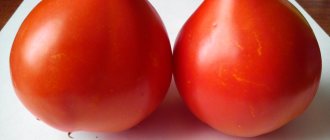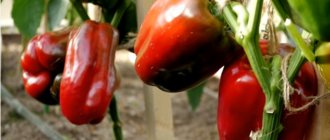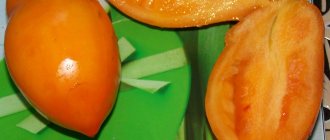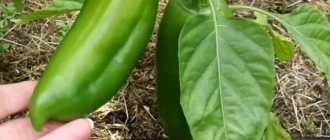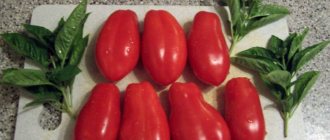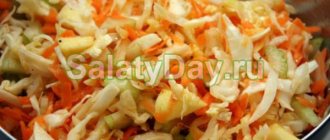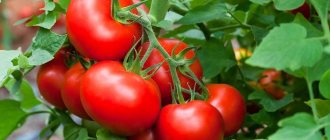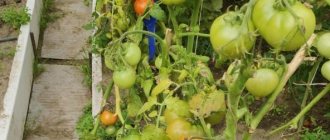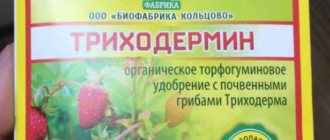| Ripening period: | early ripening (95 days from sowing) |
| Shape, weight of fruits: | spherical, weighing 100 g |
| Bush height: | 65-80 cm |
| Regions for cultivation: | in open ground to the latitude of the Moscow region, to the north - in greenhouses |
| Productivity: | up to 3.5 kg per plant |
Modern varieties and hybrids of tomatoes delight vegetable growers with stable yields and excellent disease resistance. The Leopold F1 tomato was created by Russian breeders 20 years ago and has received well-deserved recognition. Gardeners appreciate its productivity, unpretentiousness and versatility in cooking.
Characteristics of the hybrid variety
The authorship of the creation of the Leopold hybrid belongs to the Gavrish company. This company is famous for creating varieties of tomatoes and other vegetables adapted to the climatic conditions of Russia. This tomato is intended for growing in open ground or in greenhouses and film tunnels.
The Leopold tomato belongs to determinate plants, reaching a height of 80 cm. The leaves are slightly wrinkled, dark green, and medium in size. The main stem stops growing after the formation of the 6th flower raceme.
To increase yield, it is recommended to grow a hybrid with 2-3 stems. An additional harvest is obtained by leaving 1-2 strong side shoots.
The appearance of the Leopold variety plant can be assessed from the photographs presented.
The Leopold variety is recommended for growing by beginning gardeners. Minor errors in agricultural technology do not affect the final harvest.
Each cluster grown on a tomato stem grows up to 7 spherical fruits. They are uniform in size and weigh 90-105 g. The skin of tomatoes is smooth and bright red when fully ripe.
Tomatoes have a pleasant sweet and sour taste and pronounced aroma. The purpose of the fruits is universal: they are used for pickling, pickling, eaten fresh, and prepared in stews and sauces.
The Leopold hybrid yields its harvest 3 months after seed germination. 3-3.5 kg of healthy, beautiful fruits are removed from each plant. From 1 sq. m of protected soil, with compacted planting, 10 kg of tomatoes are harvested.
Advantages of a hybrid
According to the reviews of everyone who planted the Leopold tomato, only advantages can be noted in the bush itself and in the fruits. And if anyone changed it on their plot for some other variety of tomatoes, it was only by yielding to the desire to discover something new from the huge and diverse world of tomatoes.
- Tomato bushes are small and compact;
- Plants are cold-resistant;
- High resistance of bushes to diseases;
- Tomato fruits ripen together;
- High plant productivity;
- The fruits are transportable and stored indoors for a long time;
- Beautiful appearance of the tomato: nice round shape and bright shade of the fruit.
Planting and care
For seedlings, Leopold seeds are sown 60-65 days before planting the plants in the garden. The seedlings are kept in a bright room, at a temperature of +20 +22 degrees.
The time of removal of tomatoes to a permanent place of growth is determined by the climate of the growing region:
- in the middle zone and Moscow region, tomatoes are planted in open ground in late May - early June;
- in the Leningrad region and the Southern Urals - in mid-June;
- in the middle and northern Urals, in Siberia, tomatoes are grown in greenhouses, planting seedlings in shelters no earlier than June;
- in the south, plants are brought out into the fresh air at the beginning of May.
Tomato seedlings are planted when the soil temperature has reached +15 degrees and the air has warmed up to +18 +20 degrees. A decrease in temperature to 0 leads to the death of plants.
Leopold is planted in loose and fertile soil. A distance of 40 cm is maintained between the bushes. It is recommended to mulch the soil under the plants with straw dust or shavings in a layer of 8 cm. This coating retains moisture deep, retains heat and suppresses the growth of weeds.
Despite their short stature, Leopold tomatoes need tying to a support and pinching. Unnecessary shoots are removed regularly, preventing them from growing to large sizes.
If the bush is formed from 2-3 stems, they are tied to the supports with a fan. This way the branches will be well ventilated and evenly illuminated by the sun.
Caring for plantings consists of regular watering and fertilizing, loosening the soil (if there is no mulch). Water the tomatoes 1-2 times a week, not with cold water, strictly at the root.
Leopold tomatoes are fed 2-3 times during the summer. The plant especially needs nutrients during the period of flowering and fruiting. They use mineral and organic fertilizers, herbal infusions, and compost.
Features of agricultural technology of tomato Leopold F1
It is recommended to grow Leopold tomatoes using seedling technology.
Landing
Since this variety is a hybrid, you cannot prepare its seeds yourself; you will have to purchase them in the store. In this case, you need to pay attention to the expiration date and name of the manufacturer - only reliable brands can provide high-quality seeds.
The group is trusted in the seed market
Unlike many other varieties, Leopold seedlings are planted in the ground at the age of 30–35 days (and not 50–60, as usual). Based on this and taking into account that tomatoes are planted in greenhouses in the middle zone in the second half of April, seeds for seedlings should be sown in early March (remember that the time for full germination to appear can be 4–6 days).
It is recommended to plant tomatoes of this variety in a two-line pattern, maintaining a distance between rows of 50 cm, and between plants in a row - 40 cm. Since tomatoes need garter, when planting you should take care of equipping special supports, which can be trellises, cords , hanging from U-shaped supports and simple stakes driven near each bush.
Leopold F1 tomatoes are planted at a distance of 40 cm between bushes and 50 cm between rows
Care
Leopold tomatoes are grown in accordance with the usual rules for determinate greenhouse varieties. Therefore, we note only some important points for this variety.
Disease resistance
Leopold F1 is characterized by increased immunity to diseases common among tomatoes:
- tobacco mosaic virus;
- fusarium;
- cladosporiosis.
Under unfavorable climatic conditions (cold, high humidity) and poor agricultural practices (excess nitrogen fertilizers, dense planting), Leopold tomatoes may suffer from fungal infections. To prevent this from happening, in unfavorable damp summers it is recommended to spray the plants with antifungal drugs (Fitosporin, Planriz, Trichodermin). These products are biological fungicides and do not accumulate in fruits.
Features of cultivation
The crop shows good yield with any growing method. To further shorten the ripening time of fruits, vegetable growers practice the seedling method. It involves the implementation of certain stages, the quality of which determines the final result. The Leopold tomato growing algorithm consists of:
- Compliance with the timing of sowing seeds. The optimal time is the end of March. It is important to remember that the date is calculated taking into account the time of planting the seedlings in a permanent place. Tomato seedlings must be transplanted at the age of 50-60 days.
- Preparing containers. If tomato seedlings will be grown on a windowsill, it is good to use a wooden planting box, container or cups. Treat the container with a solution of potassium permanganate.
- Soil preparation. For sowing seeds of the Leopold variety, a ready-made substrate from a garden store or prepared by yourself is suitable. It consists of equal parts of peat and humus. Add 1 cup of wood ash to 1 bucket of mixture.
- Preparation of planting material. Seeds of the Leopold f1 variety need to be disinfected. To do this, you can use solutions of potassium permanganate or baking soda. The concentration of substances should be weak. Additionally, it is recommended to soak the seeds for 2 hours in the Epin solution. Then dry.
The sowing process can be called classic. You will need to fill the container with soil, after laying a drainage layer. Make small grooves. Bury the dried tomato seeds 1-1.5 cm, cover with soil, and moisten with a spray bottle. Place glass on top or stretch film to create a microgreenhouse effect. Place the container in a room with a temperature of + 25 ° C until germination. As soon as the tomato seeds hatch, move the containers to a place with a lower temperature - no more than + 16 °C. this technique will save Leopold seedlings from being pulled out. After a week, return to warm temperature and maintain for a month.
Important! Seedlings need to be provided with good lighting.
If the room is warm and there is not enough light, the seedlings stretch out.
Tomato seedlings are quite hardy, but it is necessary to control the level of heat, light and moisture
Caring for Leopold tomato seedlings includes:
- Turn the containers every day so the other side faces the sun. This must be done so that the seedlings grow evenly.
- Regular and dosed watering. The soil should not dry out, but also not be waterlogged.
- Picking up tomato seedlings. After two true leaves appear, it is important to transplant the plants into separate containers, pinching the central root.
- Feeding. The first time it is necessary to apply the composition 2 weeks after picking. You can take 30 g of potassium nitrate and double superphosphate and dissolve them in 10 liters of water. Repeat after 2 weeks.
15-18 days before transplanting, begin to harden seedlings of the Leopold variety, gradually increasing the time.
Hybrid seedlings can be transferred to open ground after May 5, and to a greenhouse - at the beginning of June. Harvest at the end of July and August, respectively.
Tomato planting pattern 40x50 cm, optimal density 4 plants per 1 sq. m. When formed into one stem - 6 plants. Aftercare:
- Watering. It is best to irrigate Leopold tomatoes in the evening, with settled water and at the root. After transplanting, water the seedlings of the variety daily; 0.5 liters of water is enough for one plant. As they grow, reduce the frequency of watering tomatoes to 1-2 times a week. It is important to ensure that the soil does not dry out or there is stagnation of moisture. The main periods when tomatoes need watering are before hilling, the moment of flowering and fruit formation, after fertilizing.
- Feeding. The Leopold variety needs to be fertilized for the first time 2 weeks after planting. The tomato hybrid responds best to organic fertilizers. You can use an infusion of bird droppings or mullein. In the phase of ovary formation, you will need to switch to mineral complexes. It is recommended to use superphosphate, ammonium nitrate, and potassium fertilizers. Dosage of substances – 30 g per 10 liters of water. Boric acid (1 g) can be added to the finished solution. The frequency of mineral fertilizing is once every 2 weeks.
- Tying. To secure the branches, you should tie them up. The tomato variety has a high yield, so the stems may not be able to withstand the amount of fruit. It is recommended to remove 1-2 flowers on the last inflorescences if the bush is heavily overloaded.
- Hilling. 1-2 procedures are enough. Tomatoes need the first 10 days after transplantation, the second - 14 days later. Hilling stimulates the growth of additional roots.
- Formation of the stem. On the area of greenhouse ridges, the Leopold variety should be grown in 1 trunk (central). In an open space, you can have 2 or 3 stems to make the bush more luxuriant.
Important! The last brushes and lower leaves should be removed.
Tomato varieties do not require large expenses when growing. Even novice farmers can easily complete all care points.
It is recommended to leave wide row spacing, which will make caring for tomatoes much easier.
Advantages and disadvantages
Gardeners already familiar with the Leopold hybrid note the following advantages of the plant:
- compact tomato size;
- resistant to diseases and temperature changes;
- early maturation;
- high yield rates;
- the size and density of the fruit are well suited for pickling.
The disadvantages include the need for gartering and pinching of the bush, and some sourness in the taste. No other significant disadvantages were identified in the variety.
Advantages of the variety
- Precocity;
- High resistance to diseases: cladosporiosis, tomato mosaic virus, late blight;
- Not necessarily stepsoning;
- Simultaneous, non-extended ripening of fruits;
- Tolerates temperature changes relatively easily;
- Tomatoes are not prone to cracking;
- The fruits have a medium, neat shape and store well.
Similar hybrids
According to the characteristics and description of the Leopold variety, it is similar to the following hybrids:
- Verlioka. A hybrid plant that produces a crop 115 days after sowing. The length of the tomato stem in open ground is 120 cm, in a greenhouse it reaches 150 cm. The fruits are small, spherical, red, weighing 100 g. The pulp is sweet and sour, dense, juicy. The skin does not crack when the tomato ripens. Productivity up to 5 kg from 1 bush.
- Buddy. An early low-growing tomato variety for open ground and film tunnels. Stem height is 55-60 cm, requires shaping and garter. The fruits are flat-round in shape with slight ribbing, weighing 100 g. The color is red, the taste is sweetish. The use of tomato is universal. From 1 sq. m harvest up to 9 kg of crop, subject to compliance with all agrotechnical cultivation rules.
- Blagovest tomatoes. Hybrid from the company Gavrish. Recommended for growing in a greenhouse. The height of the bush is 160-170 cm, which needs staking and pinching. The plant has high innate immunity to TMV, fusarium, and cladosporiosis. The fruits are round, red, weighing 110 g. Their pulp is dense and sweet. Tomatoes are suitable for fresh consumption and pickling. From sq. m. they get 10-12 kg of harvest in protected soil conditions.
Other varieties similar to the Leopold tomato also have good reviews: White filling, Gina, Debut, and Riddle tomatoes.
Fruit characteristics
Tomato fruits ripen not particularly large, neatly small in size. The average weight is 100 g. The low weight of the fruit is compensated by the total quantity, which, as I mentioned earlier, ripen at the same time.
Photos of Leopold tomatoes:
The tomatoes themselves have very pleasant characteristics:
They have a round shape, are distinguished by juicy pulp and a sour-sweet taste. Even picky gourmets will like them. The color of the peel is red-matte.
Leopold F1 tomatoes are perfect for use for a variety of purposes. They are good both for fresh consumption in salads and for canning and making tomato juice and paste. Their size is compact - they are generally ideal for pickling and canning.
Interesting video about productive tomato varieties:
Leopold F1 is exactly the tomato variety that is suitable for any summer resident who grows crops for his own needs and even for sale.
Growing regions
The originator of the variety declared successful cultivation in the territories of the 3rd light zone.
The list of areas includes:
- Belgorodskaya;
- Vladimirskaya;
- Kaliningradskaya;
- Lipetskaya;
- Moscow;
- Sverdlovskaya;
- Tambovskaya;
- Tomsk and Tyumen regions.
The Republics of Tatarstan, Bashkortostan, Sakha, Khakassia and the Krasnoyarsk Territory are also suitable for zoning.
Where to buy, how much it costs
You can purchase seeds in a specialty store or order online. The average cost of a bag of seeds is 20-40 rubles. Closer to the time of planting seedlings, you can purchase ready-made young plants at agricultural markets and fairs. The average price for 1 bush will be 50-80 rubles.
Hybrid tomatoes of the first generation Leopold are attractive both for beginning gardeners and for industrial sales. The absence of difficulties in care, the compact size of plants and fruits (as can be seen in the photo) allows even beginners to get a bountiful harvest of bright red tomatoes.
The description of the variety indicates the presence of genetic resistance to most fungal diseases, unattractiveness to insect pests, favorable harvest ripening and high transportability, which are attractive for commercial sales.
Features of the tomato variety
All early ripening tomatoes, which include the Leopold variety, are always loved by vegetable growers.
The fruits appear in early summer, delighting with a juicy taste and beautiful appearance. Regardless of growing conditions, the size of an adult plant remains invariably limited.
The variety was included in the lists of the State Variety Commission in 1998 and is intended for cultivation in areas belonging to the 3rd light zone - the Central region. However, it is possible to grow tomatoes in less light.
Reproduction methods
The Leopold variety is propagated exclusively by commercial seeds. It is not possible to obtain a viable rooted stepchild, nor is it possible to prepare seed material yourself.
The seeds obtained from the collected fruits will produce a harvest with unpredictable properties, since the variety is a first-generation hybrid.

